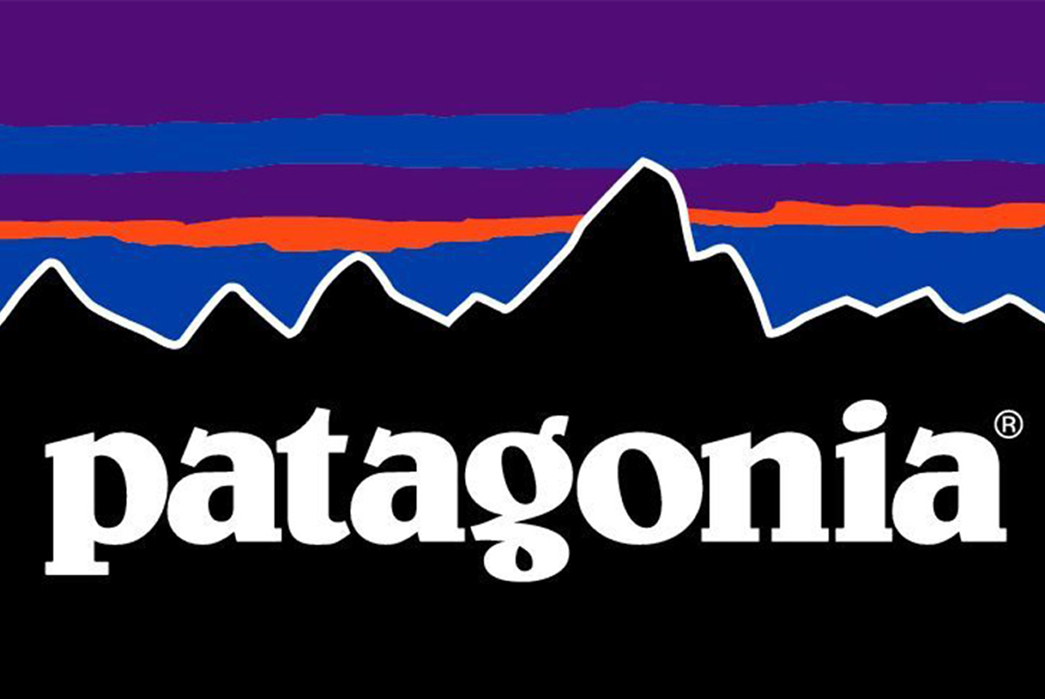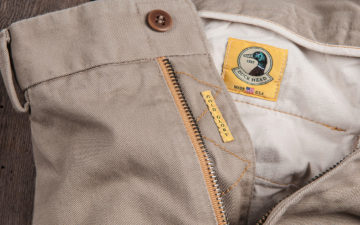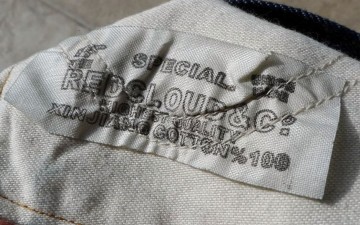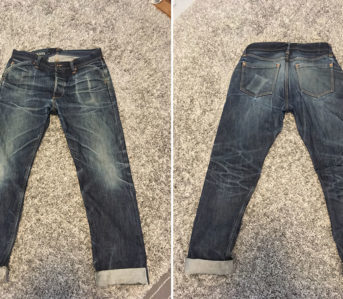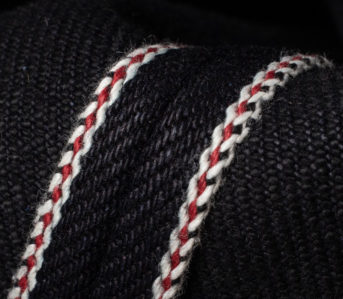It’s no secret that we like outerwear here at Heddels. And we try our best to be conscious about our consumption, too. So when it comes to a brand like Patagonia, who’s been in the game of outerwear and sustainability since the early 70’s, we are all ears. From pioneering the development of innovative fabrics to contributing to grass roots activism, Patagonia’s approach is unique.
But equally as important, the brand’s efforts are consistent. From the early days of manufacturing climbing hardware to becoming a global giant and leading outdoor wear company, founder Yvon Chouinard has steered the ship in the same direction for decades. It is this approach, and consciousness, that makes Patagonia stand out. So we thought it was about time to really examine the history of the brand and highlight some of its key products.
Humble Beginnings
In 1947, the Chouinard family moved from rural Maine to Southern California. Nine-year-old Yvon, did not know what magic awaited him on the Californian coast. His father was a French-Canadian laborer who took on roles as a journeyman plasterer, carpenter, electrician, and plumber. He even worked for a stint repairing the looms in the local Worumbo Woolen Mill. Yvon Chouinard wouldn’t have realized this at the time, but working with his hands and the manufacture of textiles would both play a significant role in the rest of his life.
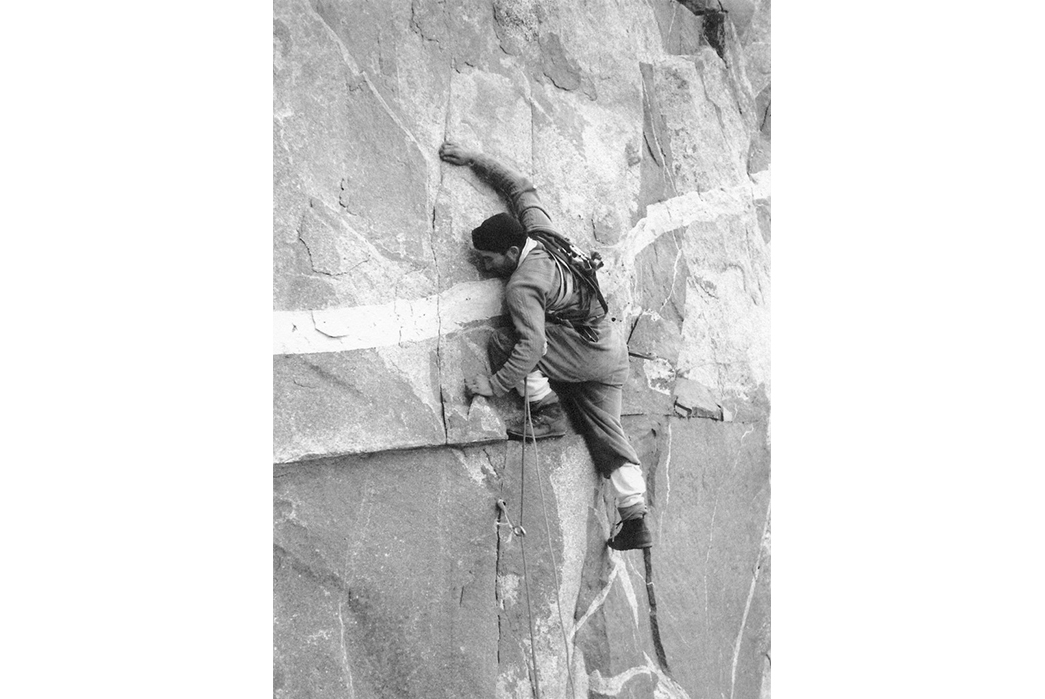
Image via The New Yorker.
Yvon escaped the bore of high school by immersing himself in the urban wilds of Griffith Park and the Los Angeles River, spending his weekends free-diving off the Malibu coast and joining the Southern California Falconry Club. One of the adult leaders in the Falconry Club taught Yvon and his band of fellow misfits how to rappel down rocks to access falcon aeries on the cliffs. The boys became so enamored with the sport that they began hopping freight trains from the west end of the San Fernando Valley to the sandstone cliffs of Stoney Point. The crew learned to climb up the rock faces as well as rappel down them without specialized equipment, they wore sneakers or went barefoot.
Climbing soon became the main draw and in 1954, Chouinard drove to Wyoming to spend time in the Wind River Range and Grand Tetons where he learned to climb and fly fish. He befriended members of the famous Sierra Club and would-be legendary climbers including Royal Robbins and Tom Frost, and continued to climb, surf, and fish. And in 1957, perhaps unbeknownst to the adventurous 19-year-old, a seed was sown which would direct the next decades of Chouinard’s life.
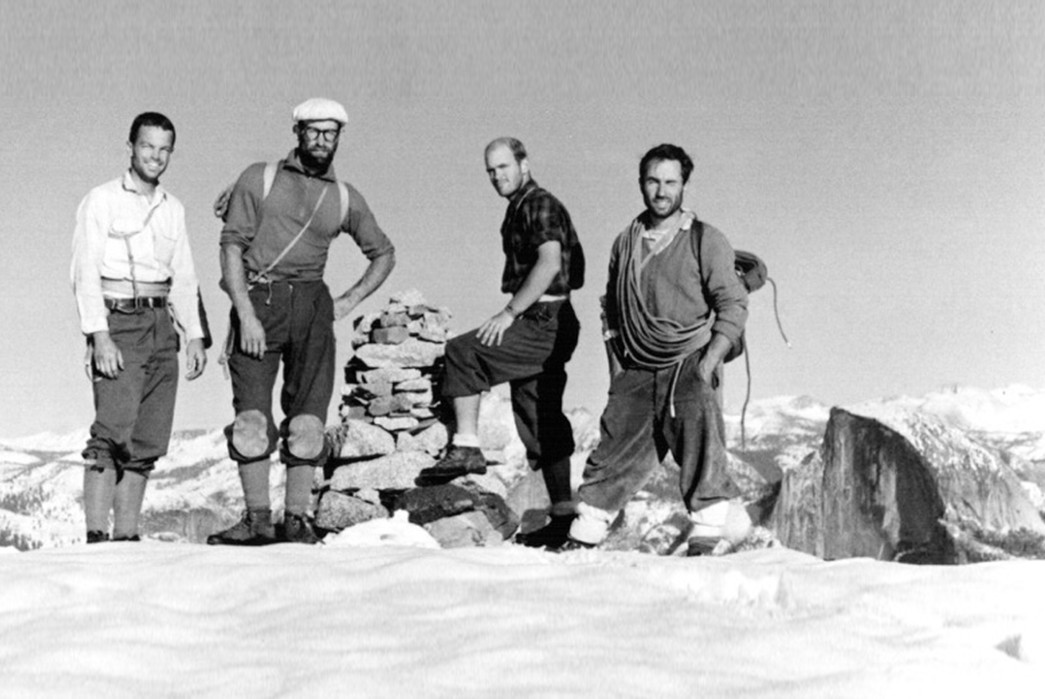
Image via IMDB.
Summers in The Valley
To better conquer those ‘big walls’ of Yosemite, Chouinard needed better equipment. He went to a junkyard and bought a coal-fired forge, hammers, and began to teach himself blacksmithing. He needed hundreds of pitons (a peg or spike driven into a rock to support a climber or a rope) for multi-day ascents in ‘The Valley’, so the entrepreneurial young climber thought it would be easier to make his own.
News of Chouinard’s superior equipment traveled fast through the climbing community and he began to sell the pitons for $1.50 a piece (almost eight times more expensive than the imported European pitons many climbers used at the time). The business allowed Chouinard to live a freewheeling life, surfing up and down the Baja and California coast, climbing the high mountains of Wyoming, big walls of Yosemite and even the Alps. Then he was drafted into the Army.
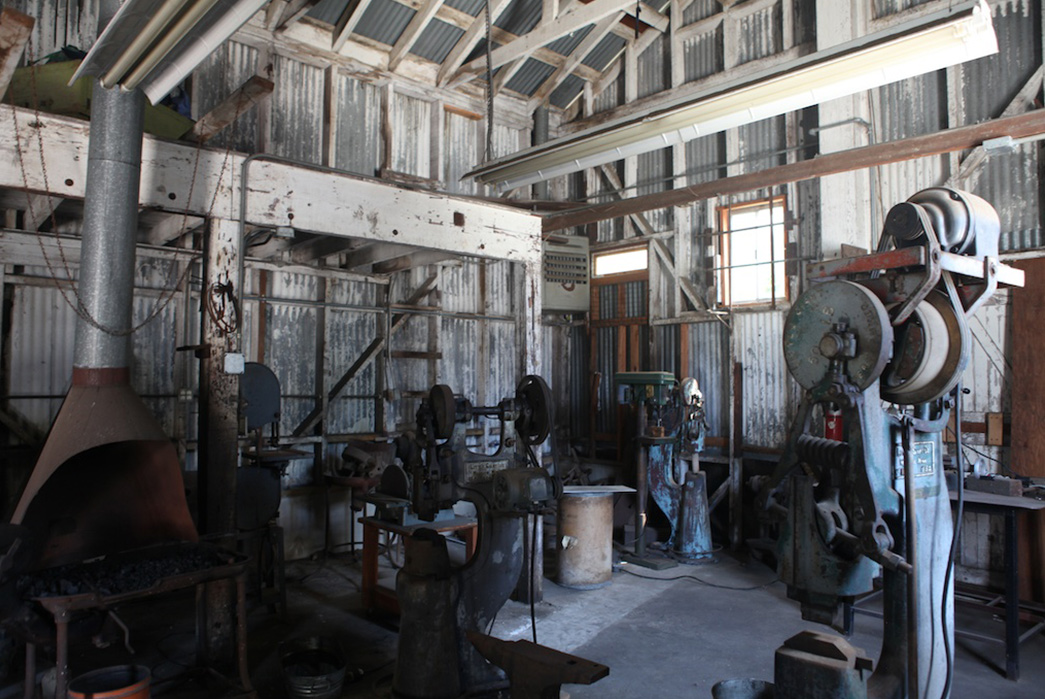
Image via A Continuous Lean.
After being honorably discharged in 1964, he made the first ascent of the North American Wall on the famed El Capitan with a host of other climbing vagabonds. Chouinard returned to producing climbing gear with renewed vigor and put out his first catalog in the same year. It specified though that customers shouldn’t expect fast delivery during the months of May to November (climbing season in Yosemite).
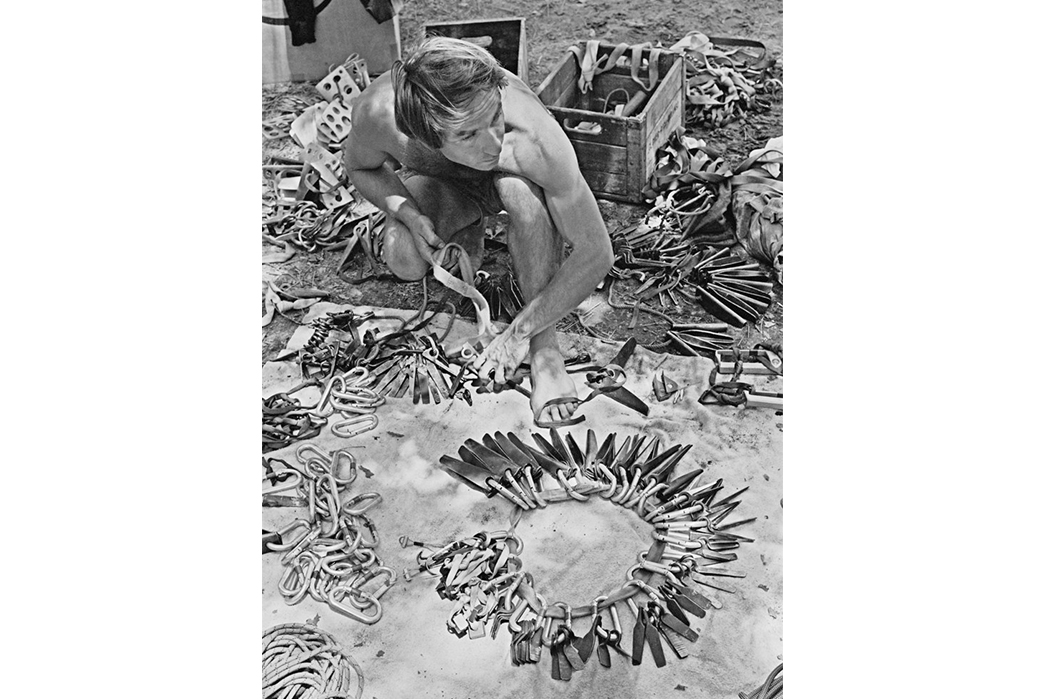
Image via The New Yorker.
Demand for top-of-the-range climbing hardware grew and Chouinard’s operation moved out of Burbank and up the California coast to Ventura (close location to good surf breaks). He set up shop in a rented tin boiler room of an abandoned packing company slaughterhouse and Chouinard Equipment was born. By 1970, the company had become the largest supplier of climbing hardware in the U.S. and he continued to expand its offering to fellow climbers to include equipment like rucksacks and clothing built to withstand the rigors of Yosemite or El Dorado Canyon.
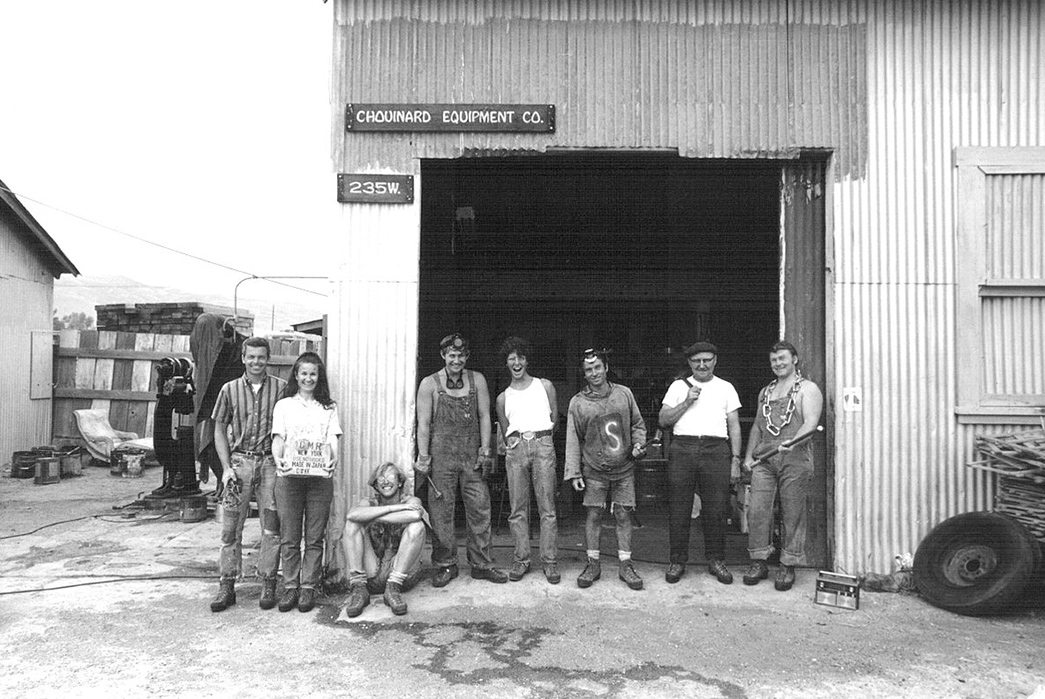
Image via Wikipedia.
In the late 1960s, outerwear was not as we know it today. It mostly looked like regular casual wear made from natural fibers. But in 1970, Chouinard returned from Scotland with a regulation team rugby shirt made by Umbro in England. The shirt featured a striped yellow and blue design, was made from a thick hard wearing cotton and even had a collar which would protect a climbing from any slings or rope cutting into their neck. Proving popular with climbers, Chouinard Equipment soon began ordering rugby shirts from England, New Zealand and Argentina. Other companies mirrored this initiative and a recognizable fashion trend followed.
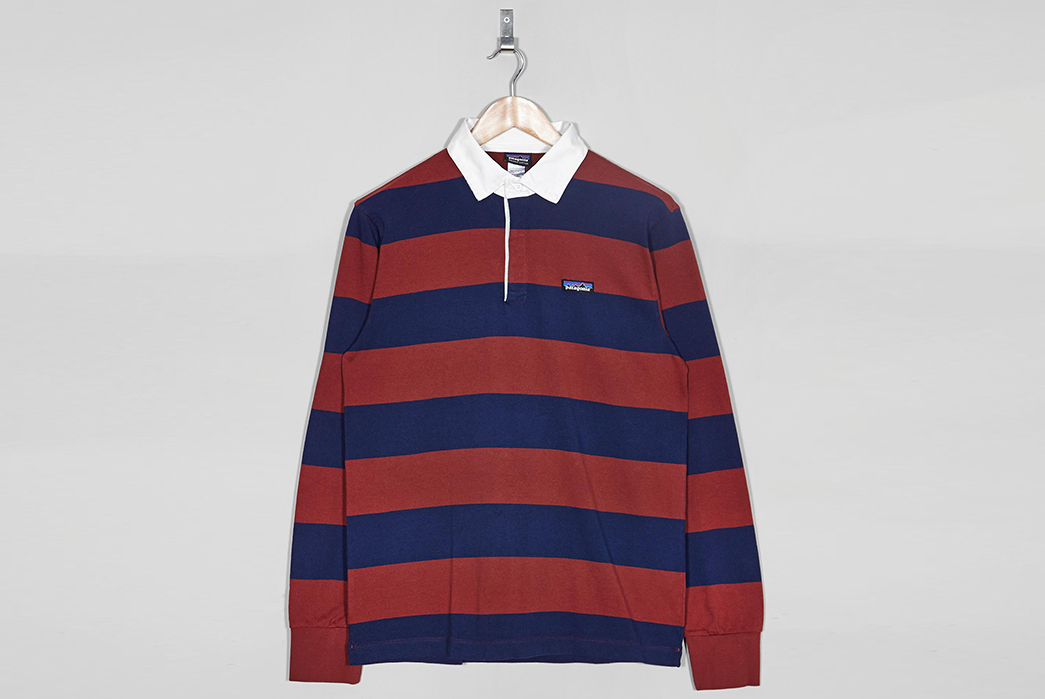
Image via Size?
The Birth of Patagonia
The business was booming but something didn’t sit right with Chouinard — his equipment had become an environmental villain as his pitons could damage and degrade the rock face. He created an alternative called a ‘chock’, ‘stopper’, or ‘hex’, which were wedged by hand into gaps within the rocks and climbers could easily remove. In 1972, Chouinard Equipment catalog contained an opening editorial on the impact of climbing on the environment, which would become a principle and pillar of one of the most recognizable outdoor brands of the twentieth century.
As clothing production increased, Chouinard and colleagues felt a need to differentiate the soft goods from the climbing hardware. They didn’t want to dilute the Chouinard Equipment brand and they also had a vision for a bigger future and greater impact than just clothes for climbing mountains. They decided on ‘Patagonia’ and created a label which simulated the stormy sky and jagged peaks of the South American mountain range, this became the now iconic ‘Fitzroy’ logo of the brand.
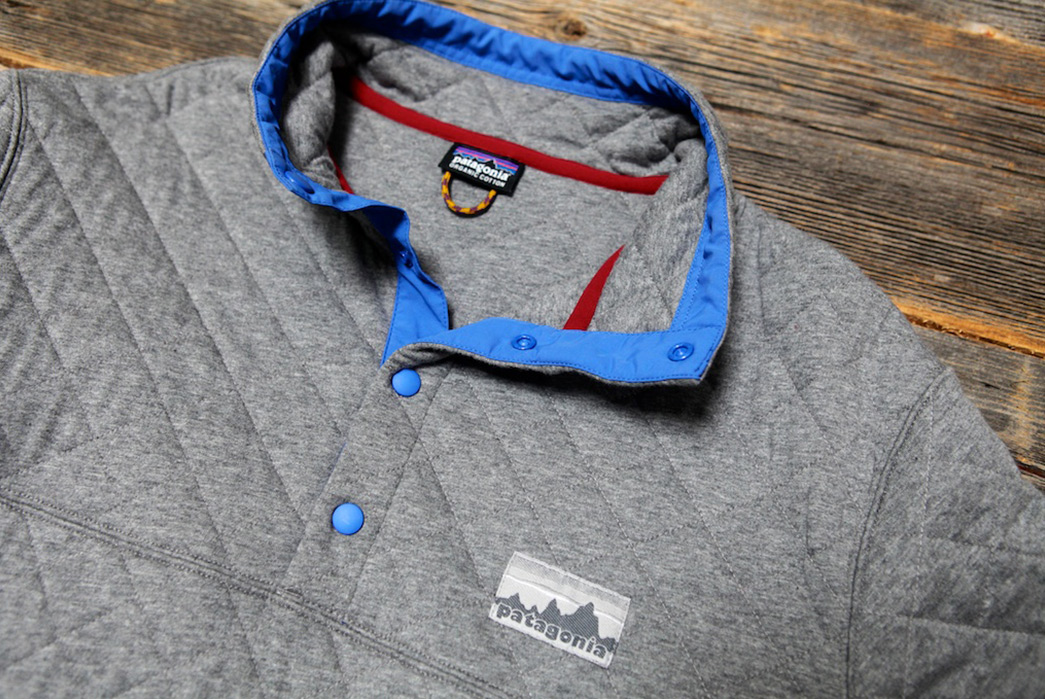
Image via A Continuous Lean.
Patagonia soon began to lay the foundations for the brand which we see today; Polyurethane anoraks were added to the offering, the famous ‘Stand Up’ shorts were created and Chamonix Guide Sweaters were flying out the doors. At the same time, Chouinard had moved the business into the abandoned meatpacking plant next door to the tin shed and renovated his old office into a retail store.
However, it was one of the brand’s most popular items that almost sent Patagonia into bankruptcy, the rugby shirt. The garment had become a growing fashion trend and it was difficult to keep up with demand. For the first time, Patagonia contracted a garment factory in Hong Kong to produce 3,000 shirts a month in eight different color combinations. The outcome was not what the brand wanted, or expected. Shipments ran late, the quality was terrible and some shirts even came with three-quarter length sleeves. Chouinard sold what he could but made little profit and this was even as the brand often re-invested in product that had relatively thin margins. As Chouinard himself stated, “there was a big difference between running a blacksmith shop and being in the rag business.”
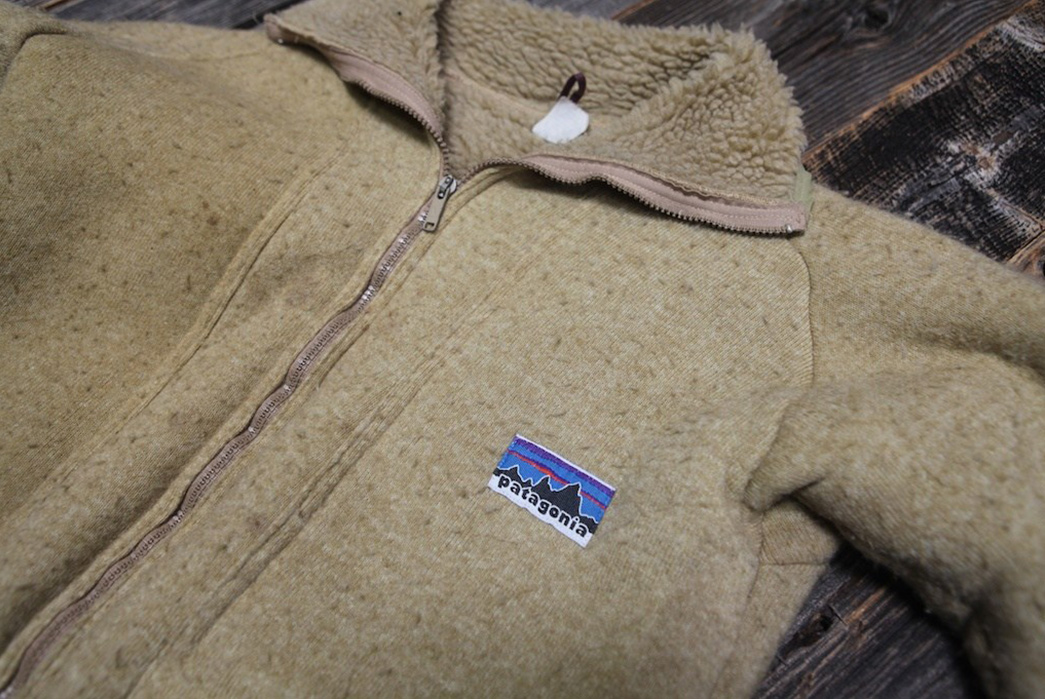
Image via A Continuous Lean.
After trying to convince local banks to borrow money and putting off payments to suppliers, there were many sleepless nights in the mid-1970s for the Chouinards. Fortunately, after appointing a new CEO and General Manager in Kris McDivitt in 1979, investment, infrastructure, and contracts all steadied.
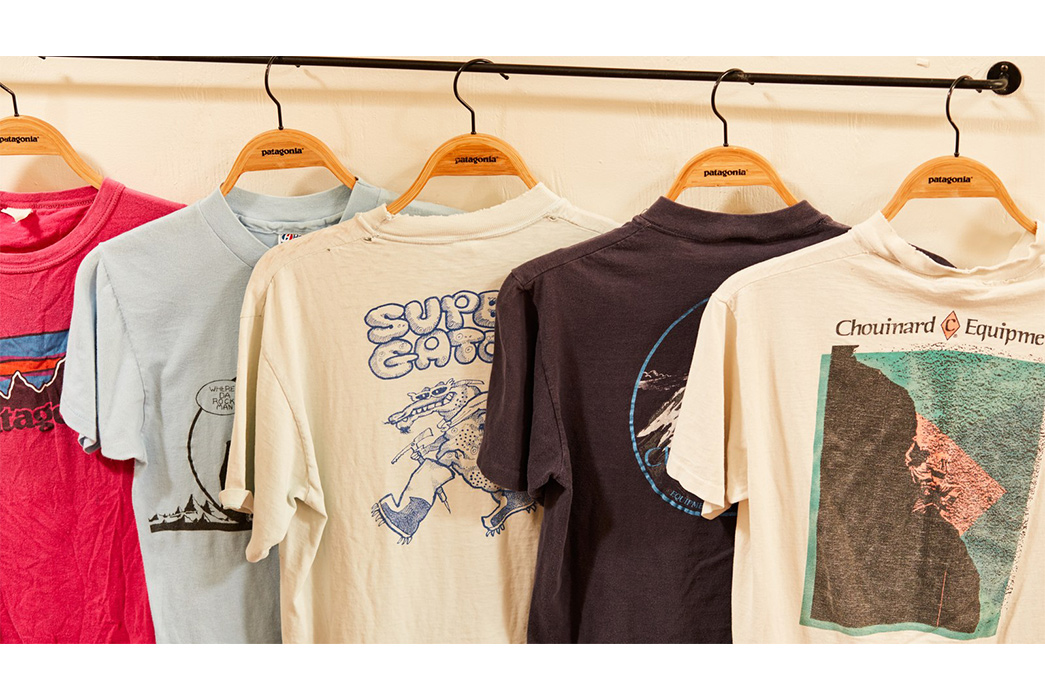
Image via GQ.
Research & Development
The late-1970’s saw more technical growth for the brand and product innovation, including the advent of ‘Synchilla’ fleece fabric (which the brand still uses today for their iconic ‘Snap-T’) and ‘Capilene’ as used in undergarments and base layers. Patagonia continued to pioneer technical innovation and look for ways in which fabric could address problems encountered in the mountains.
This lead to significant enhancements in performance outerwear and encouraged the brand to invest in its own research and design departments. Patagonia’s fabric lab and fabric development department soon became the envy of the industry. Mills also became keen to work with the brand as they knew that Patagonia’s involvement would result in a better fabric.
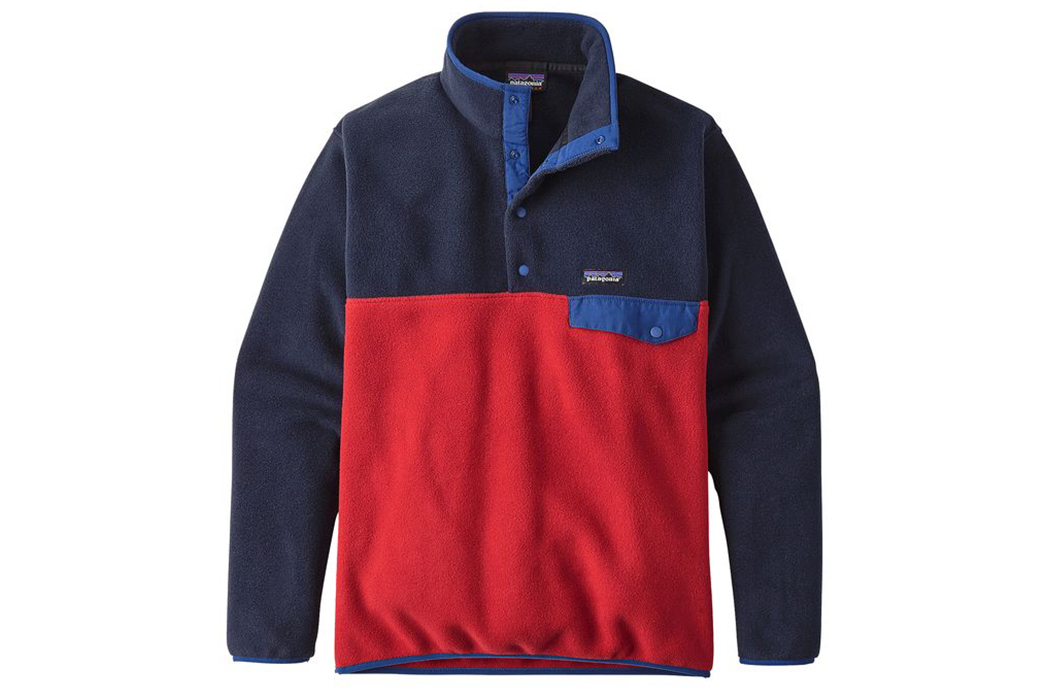
Image via Patagonia.
Patagonia set the trend for not only the function of outdoor clothing but its appearance as well. The majority of outdoor wear and equipment was drenched in drab colors which aligned to the natural environment but cobalt, teal, French red, and seafoam were all part of Patagonia’s palette and other brands spent years trying to catch up. The reach of Patagonia’s appeal went far beyond the mountains and started to influence fashion consumers. Sales grew to $100 million by 1990 and the majority of profits were being re-invested into the company to enable growth and development.
Environmental Commitments
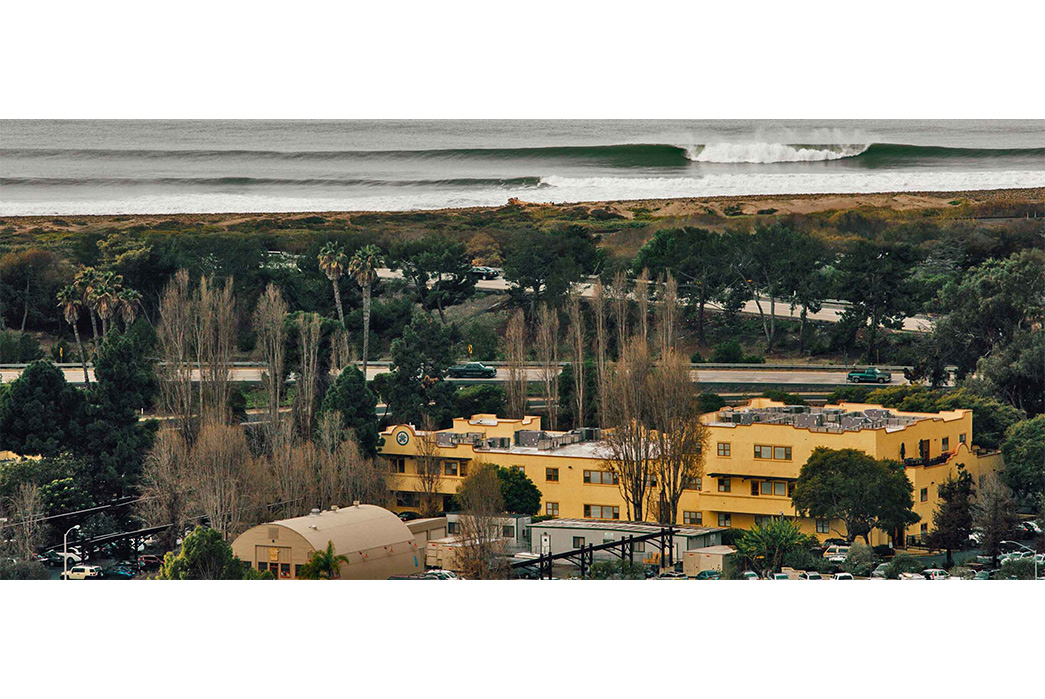
Image via Patagonia.
Despite significant growth, increased revenue, and technological advancements, Patagonia has managed to keep its values and principles intact. With a well known philosophy of ‘Let My People Go Surfing’, Patagonia employees will wear what they feel comfortable in to the office and surf during their lunch hour. McDivitt also insisted that on-site childcare was available for families employed at the company’s Ventura headquarters.
The company has also been committed to supporting grass roots activism, by donating 10% of profits to smaller groups of environmentally conscious activist groups who work to save at-risk natural areas, preserve eco-systems and protect wildlife. Patagonia later upped the stakes to 1% of sales, or 10% of profits, whichever was greater. In addition, the company has undertaken a major education campaign on an environmental issue each year and hosts a ‘Tools for Activists’ conference which aims to teach marketing and publicity skills to groups that the brand work with.
Key Products
Retro Pile Fleece
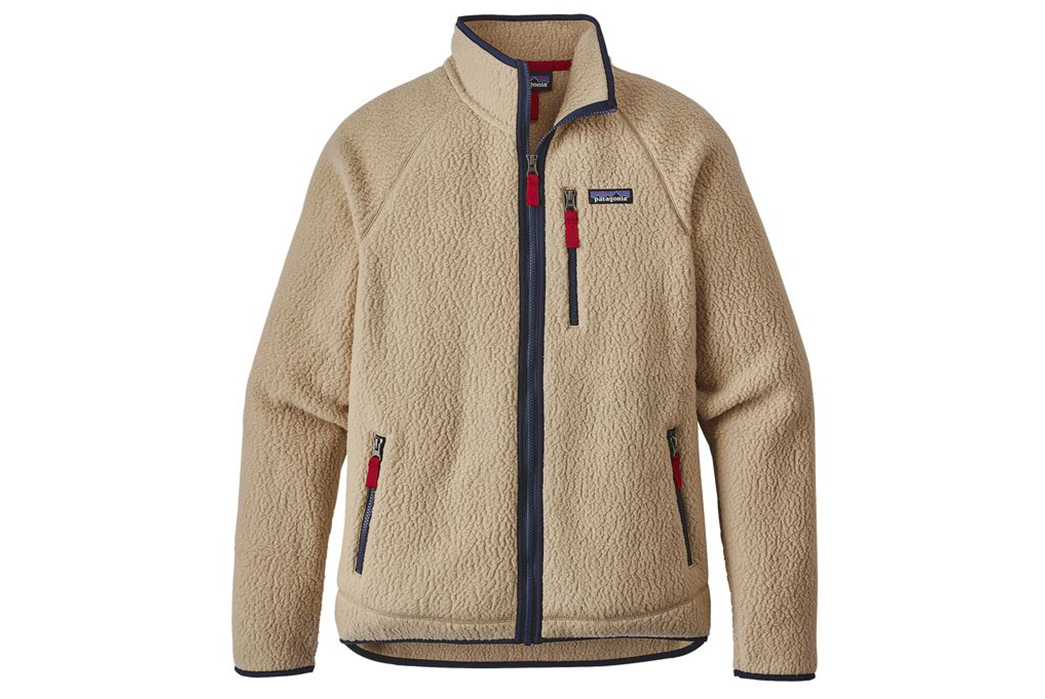
Image via Patagonia
Making a return for SS18, the Retro Pile Fleece takes inspiration from the back catalog of Patagonia offering including the ‘Big Label’ pile jackets of the 1970s to the popular ‘Retro X’ fleece seen on the streets of Tokyo. Made from a 100% polyester double-sided solid shearling with a full front zip and stand up collar, we’d say this is as close to ‘classic’ as you can get (at least where the humble fleece is concerned). With zippered hip and chest pockets, raglan sleeves and elastane trim cuffs and hem, grab the El Cap Khaki if you’re planning a trip to Camp 4 next summer.
$139 at Patagonia.
Torrentshell Jacket
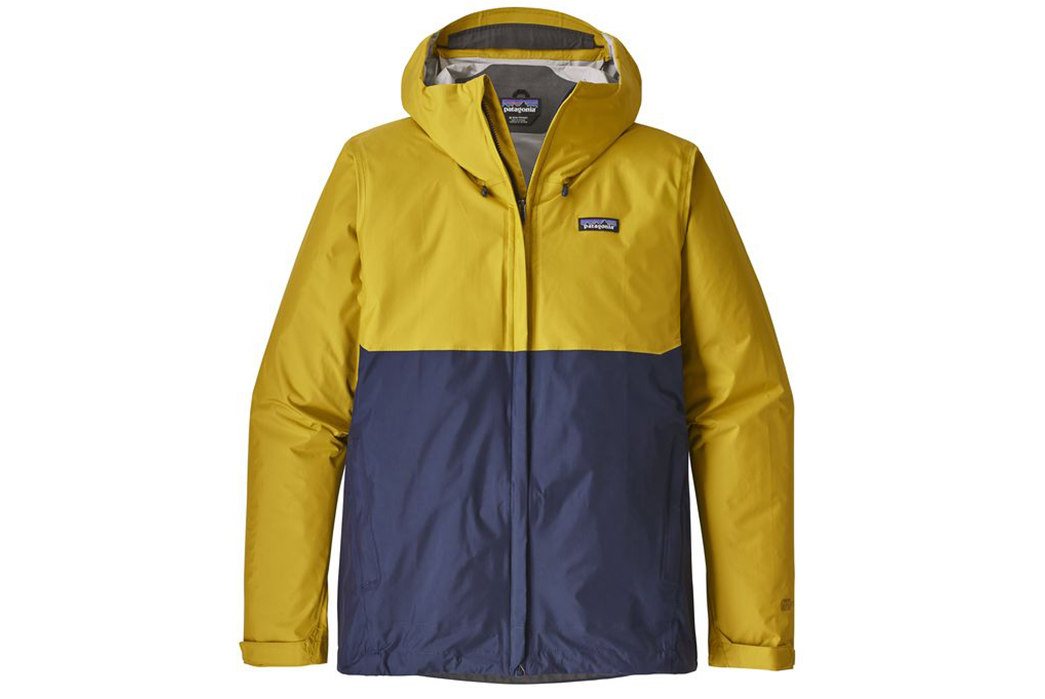
Image via Patagonia.
Need to look good and get protected against those April showers and November rain? Well, a Torrentshell is probably what you need in your grab bag. Made from waterproof and breathable H2No Performance Standard nylon fabric, this is an ideal rain jacket to drape over your office grams or to pair with some selvedge denim and Red Wings. Now taking a step forward with 100% recycled fabric and available in a whole host of colors, you don’t have to be climbing the Cascades to get use of this utilitarian piece of outerwear.
$129 at Patagonia.
Stand Up Shorts
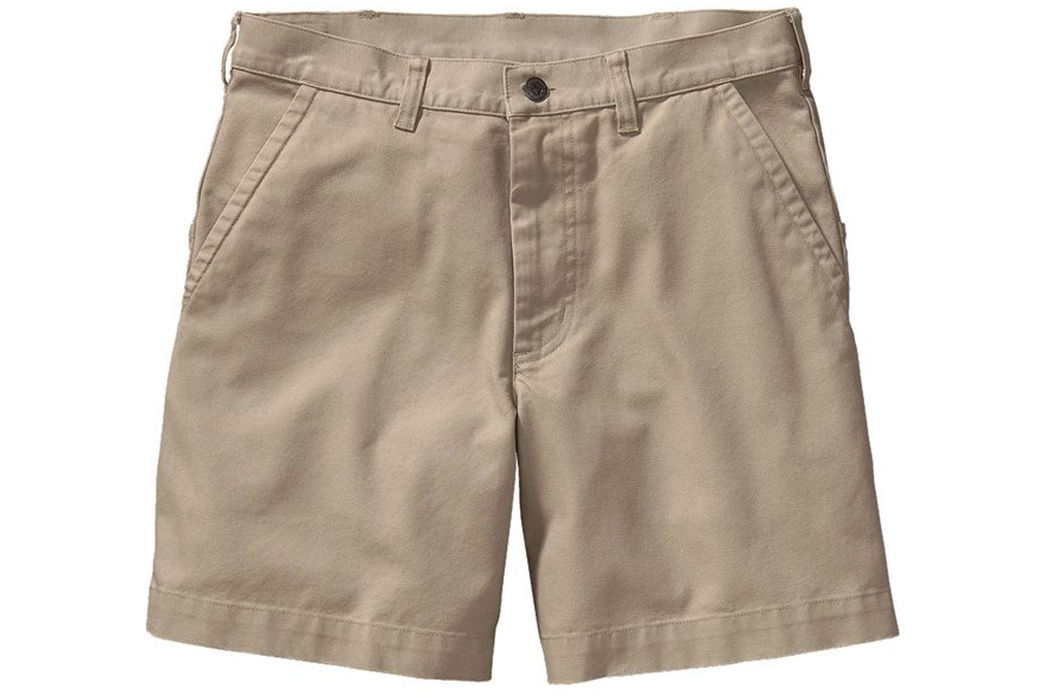
Image via Sumit Hut.
Built from a durable and doubled-down organic cotton canvas, the Stand Up short is a true Patagonia classic since the 1970s. With the design and pattern engineered by Chouinard himself, the originals were sewn from number 10 canvas duck and featured a seat and giant pockets. At the time, Yvon asked his Foreman’s wife to sew the shorts using a walking foot sewing machine, which was usually reserved from sewing leather patches onto Chouinard Equipment packs. After the first pair was made, she commented and laughed that they “stood up” all by themselves. And so the legend was born.
$59 at Summit Hut.
Nano Puff Hoody
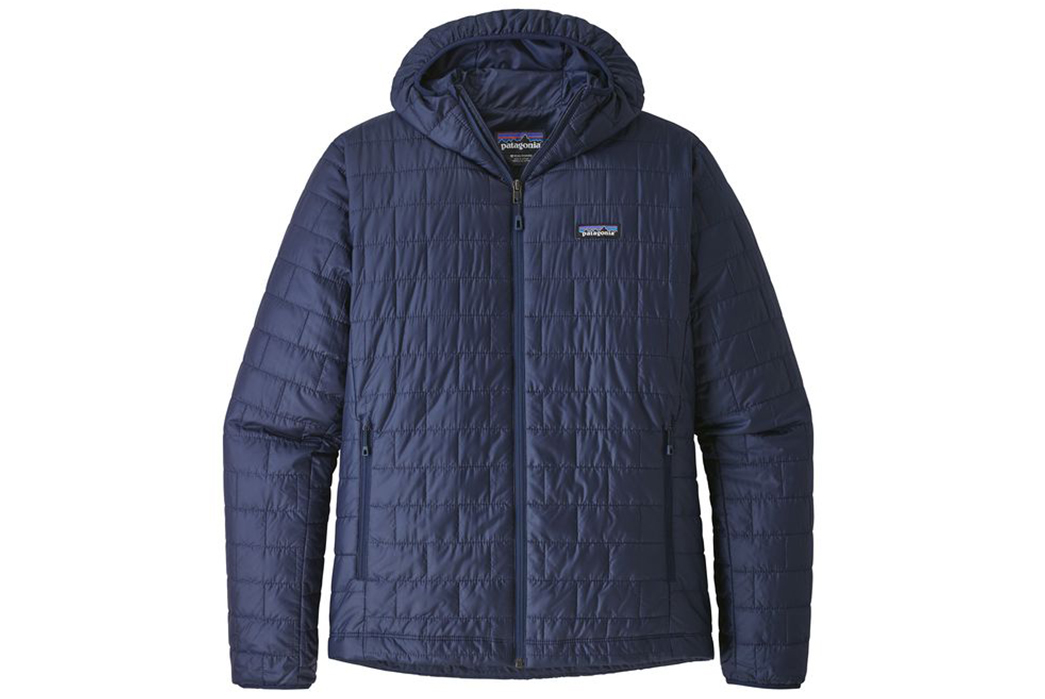
Image via Patagonia
Comprised of a lightweight and 100% recycled polyester ripstop shell with a DWR (Durable Water Repellent) finish, the Nano Puff hoody is packed with 60-g PrimaLoft insulation and is highly compressible, so perfect for city slicking or hiking the backcountry. The basic yet tried and tested design is what makes the garment an understated icon.
$249 at Patagonia.
Reason For Being
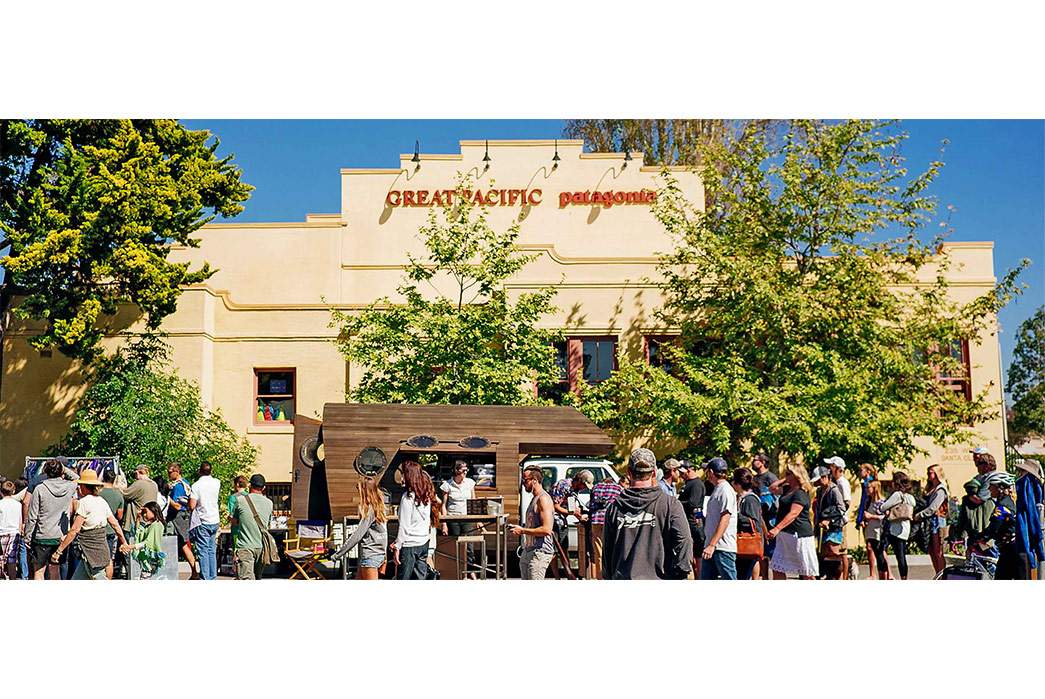
Image via Patagonia
Patagonia states that they’re “in business to save our home planet.” Whether it’s offering 100% organic cotton in its product, campaigning to remove dams which are damaging river eco-systems or continuing to invest in research to enhance product (and lifestyle), this is a brand which takes conviction in its actions and stands behind its word.
And while Patagonia has been the target of scandal in the past which includes accusations from PETA regarding their wool sourced from Ovis 21, the brand has stood by its word and acted in a responsible and humble manner. In recent years, Patagonia has also upped the ante of ‘repair rather than replace’ via it’s Worn Wear program, where customers can bring in their old Patagonia garments for repair or trade them in for credit off a new item. The brand also hit the headlines with a bold and recognizable campaign for Black Friday entitled ‘Don’t Buy This Jacket’ which was the center of a marketing campaign to encourage consumers to not make unnecessary purchases. While many brands and organizations claim to be responsible and eco-conscious, Patagonia has come out on top but retained a humble and perhaps understated profile. And if their past is any indication, they’ll continue to do so.
